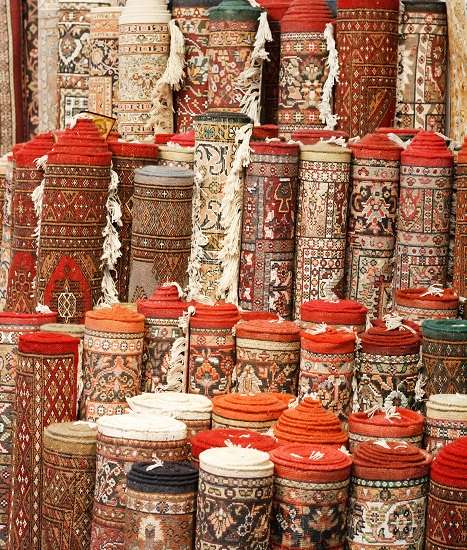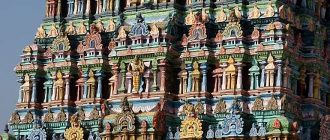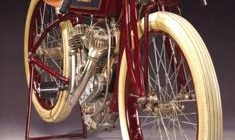Want to buy an Indian rug? Read on for facts and info on the most popular designs used for creating Indian rugs….
Indian rugs showcase an extravagant display of multicultural weaving traditions. Although Indian rugs are popular all over the world the fact of the matter is that the majority of the designs showcased on Indian rugs have been inspired by foreign cultures and then worked upon using traditional Indian techniques.
Major Influences on Indian Rug Design
Indian weavers seem to be heavily influenced by Persian styles and patterns. Persian artisans were renowned for creating extraordinary designs for rugs of all sizes. The curvilinear styles that originated in the city of Isfahan in modern-day Iran can be seen executed in Indian rug design.
The Persian artisans were not the only weavers that had an influence on the Indian tradition of rug weaving. A considerable amount of Spanish and French Aubusson influence can also be witnessed in Indian rug weaving. Indian weavers are also exceptionally skilled at copying Turkoman, Chinese and European styles.
Popular Styles In Indian Rug Designs
Indian artisans have classified their rug designs into various classes. The most popular names associated with Indian rugs are Kashmir, Agra, Jaipur, Indo Mir and Dhurries.
Kashmir rugs revolved around flat-weave techniques whereas the designs showcased on Dhurries seem to take inspiration from Native American Navajo rug weaving traditions. On the other hand indo-mir rugs were based on patterns that would cover the entire area of the rug. These patterns were known as “mir-i-boteh”. They were basically found in multiple rows of horizontal, vertical and diagonal clusters drawn in the traditional Persian style.
Turkoman rugs were initially developed by the nomadic artisans that traveled to the region belonging to countries like Afghanistan, Turkmenistan, Uzbekistan as well as some provinces of Iran. The use of the color red was predominant in these designs along with which geometric patterns would adorn the rugs. Occasional octagon shaped bunches of flowers can also be seen in these designs.
During the 18th and 19th entry Savonnerie and Aubusson styles became extremely popular in the Indian subcontinent. These kinds of rugs would most often feature color combinations in yellow, green and light blue. Indian weavers also copy traditional Chinese rugs often experimenting with color combinations. The most notable Chinese influences can be seen in the choice of pattern symbolism and the use of abstract animals. Traditional Chinese style of designing rugs has very definite characteristics. Whereas other styles create patterns using different motifs, in Chinese designs the motifs are made to stand alone. Some of the most popular Indian rugs based on these sensibilities feature motifs like the traditional stylized dragon, fret and floral patterns.
One of the most distinctive features of Chinese style Indian rugs is the way their borders are decorated. Borders are often adorned with geometric designs which are filled in with solid color. Traditionally the main motifs are made blue in color with other popular choices being pink and white. Yellow, peach, ivory, beige and apricot are some of the most commonly used background colors.





